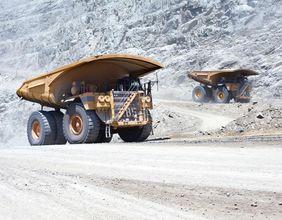International Olympic Committee news
The Olympic Games bring together athletes and spectators from all over the world, showcasing human potential, resilience and a sense of unity no other event can provide. To ensure the Games are delivered in the most useful and responsible way possible, the International Olympic Committee (IOC)’s Olympic Agenda requires organisers to create a lasting positive impact for the host while minimising their environmental footprint. That means, first and foremost, reducing the carbon footprint associated with the Games.
To help Olympic organisers understand and reduce their carbon footprint, the IOC has developed the Carbon Footprint Methodology for the Olympic Games. First published in December 2018 and updated in December 2024, this methodology provides a structured, transparent way to measure emissions and identify opportunities to reduce impact.
Carbon Footprint Methodology for The Olympic Games
Launched at the UN Climate Change Summit COP24, this guide provides detailed guidance to the Organising Committees on how to measure the carbon footprint of the Olympic and Paralympic Games.
Here are some answers to questions you might have on how it works in practice.
What is the Carbon Footprint Methodology for the Olympic Games?
The Carbon Footprint Methodology for the Olympic Games is a set of guidelines to help hosts measure, report and manage the emissions associated with organising the Games. It provides a clear framework for calculating the impact of various activities, including venue construction, transport and travel (for athletes, organisers and spectators), energy use, materials, and operations such as catering and waste management.
By following internationally recognised standards, including ISO 14064 and the Greenhouse Gas Protocol, and in line with the European Commission’s Organisation Environmental Footprint (OEF) and the United Nations’ Sports for Climate Action Framework, the methodology ensures that the carbon footprint of the Olympic Games is measured in accordance with best practice, while taking into account the local context of each Games edition.
The methodology helps hosts identify what should be included in the Games' carbon footprint, choose the best method to calculate emissions – whether based on detailed data or estimates – and identify opportunities to reduce their impact. It is also an important tool available to Interested Parties during the Continuous Dialogue phase, helping them assess potential climate impacts and integrate sustainability planning from the outset.
This transparent, structured approach ensures that the Games contribute to real, measurable improvements.
Why are some emissions included in the carbon footprint while others are not?
The methodology provides a clear, reliable way to assess emissions, allowing hosts to identify what should be counted, ensure transparency by using internationally recognised methods, and distinguish between emissions directly caused by the Games and those that are part of broader development.
For example, if a new sports venue is built specifically for the Games, its emissions are included. If a metro line upgrade was already planned before the Games were awarded, its emissions are not included, even if it benefits Olympic spectators. Short-term beautification projects or unrelated infrastructure improvements are not counted, as they are not necessary for hosting the Games. This approach ensures transparency and consistency in defining the scope of the carbon footprint.
Does this mean a host could exclude certain emissions to make their numbers look better?
No. The methodology includes strict rules to prevent selective reporting. Hosts must justify why certain emissions are included or excluded, follow internationally recognised reporting standards, and ensure that all key activities linked to the Games are accounted for. The methodology was developed with the support of several independent carbon experts to ensure it reflects best practice in terms of accuracy and consistency.
Are emissions from spectator travel included?
Yes, indirect emissions – i.e. scope 3 – including spectator travel emissions, are included in the Games' carbon footprint.
We recognise that, when planning reductions, hosts cannot control every travel choice individuals make. The focus is on providing low-carbon options that encourage more sustainable travel while ensuring that long-term transport improvements benefit residents beyond the Games.
The methodology categorises spectator travel as an "associated activity", meaning it is clearly linked to the Games but not directly controlled by the host. Travel emissions are calculated based on the number of people travelling to the host region, their mode of transport (air, rail, car, etc.) and the distance travelled. Since different types of spectators travel varying distances, the methodology uses assumptions informed by ticketing data, surveys and transport demand models.
For example, an international spectator attending multiple events may have a higher travel footprint than a local resident attending one event. To ensure accuracy, assumptions about travel behaviour – such as the number of tickets per spectator and the likelihood of multi-mode transport use – are factored into the calculations.
The methodology also differentiates between ticketed spectators (whose travel is included in the footprint) and non-ticketed spectators (whose impact is harder to quantify). Hosts are encouraged to provide sustainable travel incentives, such as improved public transport, cycling infrastructure or ticketing strategies that reward low-carbon travel.
What about permanent infrastructure? Is it fair to count emissions from buildings that will be used for decades?
Yes – but only if those buildings were constructed because of the Games. If a host was already planning a sports facility before being elected to host the Games, its emissions are not counted. If a venue was built only because of the Games, its construction emissions are included. If a venue is permanently upgraded for the Games, the emissions linked to the upgrades are included. At the same time, legacy benefits – such as improved public transport or new housing – are recognised as part of the broader long-term impact of the Games.
How are emissions from rented equipment accounted for?
Unlike purchased equipment, where 100 per cent of emissions are counted, rented equipment has its emissions counted on a pro rata basis according to its expected lifetime.
For example, if a temporary infrastructure asset is expected to be used for 25 events over 10 years, only one twenty-fifth of its total embodied carbon is allocated to the Games. If an electronic device has a five-year lifespan and is used for one year in the context of the Games, one fifth of its emissions are counted. This ensures fairness while encouraging the use of rental solutions instead of new purchases.
How does the methodology handle post-Games transformations of venues?
Some venues undergo dismantling or repurposing after the Games. The methodology distinguishes between temporary structures that are dismantled after the Games (included in the footprint) and legacy transformations – such as converting an Olympic Village into housing – which are excluded, as they are led by future owners, not the Organising Committee.
What happens after the Games? Is there a follow-up on what was achieved?
Yes. Hosts are expected to report on actual emissions compared to their initial estimates, assess what worked well and what could be improved, and share findings with future hosts, ensuring continuous learning. This process ensures the Olympic Games continue to evolve, improving their environmental impact while creating long-term benefits for hosts.
Is each Olympic Games edition expected to be better than the last in terms of carbon emissions?
With each Games edition, we aim to set better standards in delivering a more sustainable event. But progress will not always be linear. Each host starts from a different point. For example, some already have a strong public transport network in place, while others lack the appropriate infrastructure. A host with existing low-emission transport will have an easier time reducing transport-related emissions than one that must develop new mobility solutions.
What matters is that – building on lessons from past Games – each Games edition adapts to the local context, minimises impact and delivers lasting benefits for the host, in line with existing development plans. The IOC does not impose identical requirements on all hosts but ensures that each of them takes a structured, measurable approach to reducing the Games’ footprint, in line with the Paris Agreement on Climate Change.
How is the methodology updated?
Climate change is evolving fast, and so is the global community’s approach to addressing it. The IOC monitors these evolutions closely to make sure the methodology is updated when needed, and also includes relevant lessons learnt from previous editions of the Games. The current version is a revised version of the initial document published in 2018 and incorporates insights from Paris 2024 and LA28.






